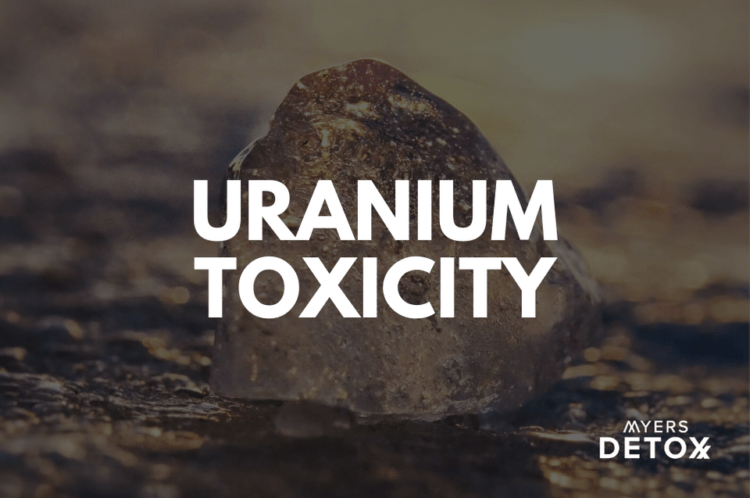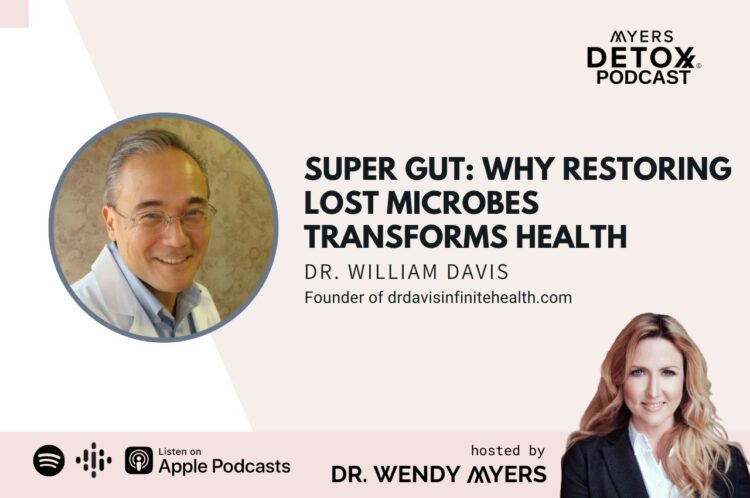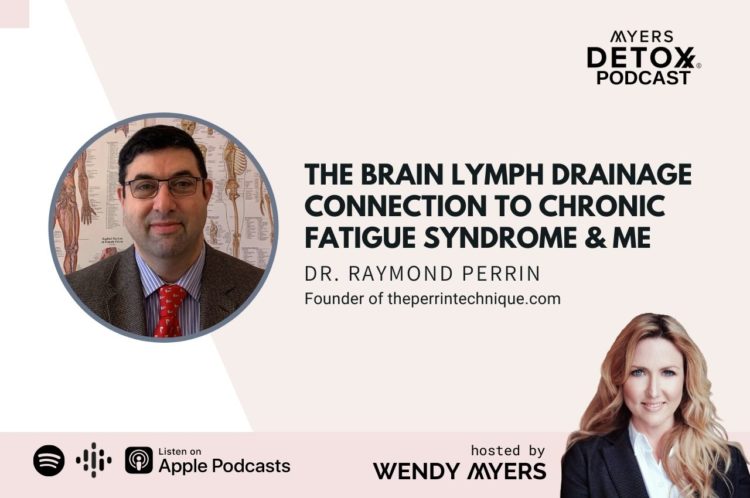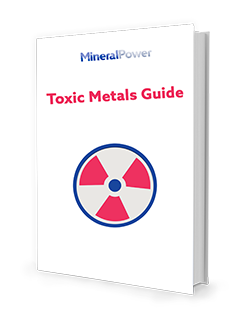Uranium Toxicity

Uranium is a naturally occurring radioactive element that enters the body through drinking water, diet, inhalation, and skin contact. Many don’t realize that they are showering daily or drinking water that contains uranium that builds up over time. Learn the dangers of uranium toxicity in this article!
Uranium causes diabetes, blood sugar control issues, hair loss and even cancer. Learn your risk, how to test for it and how to detox it.
In this article, you’ll learn:
- How you’re exposed to uranium
- How uranium get into your water
- Symptoms of uranium toxicity
- Health conditions caused by uranium
- How to detect uranium toxicity
- How to support your body’s natural detox mechanisms for excreting uranium
How You Are Exposed to Uranium
There are two types of uranium: natural and depleted, though they have an identical chemical effect on your body and can be equally dangerous [24]. The former can be found in the Earth’s rocks, soil, and water and is naturally radioactive.
Depleted uranium is the waste product of uranium enrichment in nuclear reactors, and is basically what’s left over when the highly radioactive isotopes of uranium are removed[17].
The primary source of uranium exposure is well water, though modern-day manufacturing and nuclear energy have also contributed to the amount of uranium making its way into our water and natural environment.
In fact, when scientists from the University of Nebraska took some 275,000 groundwater samples for evaluation, they discovered that many Americans live about a kilometer from wells that are uranium-polluted[16].
What’s more, a recent study conducted by U.S. researchers found that almost 2 million people in California and the Midwest live on aquifer sites which have up to 180 times the safe level of uranium[16].
My personal hair mineral analysis tests (HTMAs) show high uranium. It comes and goes on my tests. I detox it and then more comes out. I assume I have quite a bit of uranium from living in southern California for 30 years.
I notice this as well with almost all my clients in California and the southwest United States. Most have uranium toxicity or it spikes at some point on their hair mineral analysis.
But California and the Midwest aren’t the only territories of the United States with high levels of uranium in their water. According to the EPA (Environmental Protection Agency), water sources across the U.S. exceed the maximum contamination limit (MCL) for uranium[25].
In other words, no one is safe from uranium contamination.
How Uranium Gets Into Your Water
The majority of uranium found in nature exists in a solid (insoluble) form in soils and sediments. However, when these solid structures are exposed to reduced minerals (like nitrate), it creates an oxidation reaction that frees the uranium.
For thousands (more likely millions) of years, uranium was held in its solid structures in the Earth, inaccessible and unable to be absorbed by humans. With the advent of chemical fertilizers, however, a new issue presented itself; high amounts of nitrate (a reduced mineral) leading to high amounts of freed uranium[28].
When uranium is free, it becomes water-soluble and leeches its way into your water supply.
That’s why, for most people, drinking water is the primary route of exposure to uranium [24]. This is just one of many reasons why it’s so vital to have a reliable water filtration system installed in your home.
Also, keep in mind that uranium can stick to plant roots, so foods grown in uranium-rich soil could present a problem. For this reason, always wash your veggies — especially root vegetables like potatoes and radishes[24][26].
Along with oral exposure (drinking water and vegetables), uranium can also impact your health through inhalation, and to a lesser extent, through topical exposure.
The primary sources of uranium include:
- Groundwater [15] [16]
- Nuclear power plants[14]
- Nuclear bomb tests[14]
- Occupational exposure: uranium mining and refining, medical use of nuclear material, military work[14]
- Anti-tank weapons[17]
- Tank armor[17]
- Ammunition rounds[17]
- Mining[24]
- Milling[24]
- Manufacturing facilities[24]
- Food grown in soil that’s high in uranium
Knowing all of this, it’s not hard to see how we’re exposed to uranium in our daily lives, often without realizing it. And while uranium is considered to be an essential nutrient needed for your body to run at its optimal level — toxic amounts of this heavy metal can be damaging your health.
Symptoms of Uranium Toxicity
Uranium toxicity can present with a wide range of symptoms due to the fact that uranium can lodge into various tissues in your body.
In general, once uranium enters your body, the kidneys are the main target organs for its toxic effects. However, uranium can also deposit in the bones, brain, lymph, lungs, and reproductive organs[23][9][4][13].
Furthermore, uranium can bind to human DNA and trigger mutations that create protein replication errors — this could lead to a host of issues on a genetic level[17].
Some of the toxic symptoms association with uranium exposure include:
- Anxiety[23]
- Behavioral changes and disorders[2][7][10][11]
- Genetic contamination[23]
- Abnormal increase in rapid eye movement sleep (REM-sleep)[12]
- Depression[12]
- Psychiatric disorders[23]
Too much exposure to this toxic metal places more pressure on our already overburdened systems that are busy fighting off all the other toxins from our modern-day, industrial environment. Fortunately, uranium can be detoxed. But if uranium is not cleansed from the body, it can lead to some pretty harmful results.
Health Conditions Caused by Uranium
Like all toxic substances, the adverse health effects of uranium on the human body depend on the route of exposure. In most cases, uranium is deposited in the kidneys and bones, but can also be found in the lymph, brain, reproductive organs, and lungs[4].
“It was concluded that DU could accumulate in kidneys for a long period, and causes kidney injury by the toxic chemical/radioactive action such as renal dysfunction and structural damage[5].”
These are a few health conditions resulting from uranium toxicity:
- Cancer
- Behavioral disorders [7][10][11]
- Birth defects[1]
- Chronic fatigue[1]
- Chronic neurological condition[1]
- Diabetes[1]
- Elevated blood pressure[16]
- Fibromyalgia[1]
- Genetic damage[1]
- Gulf War Syndrome[1] [3]
- Hair loss[27]
- Hepatocellular carcinoma[23]
- Kidney damage[5][16]
- Leukemia[23]
- Lymphoma[1]
- Neurological effects and abnormalities[1][6]
- Poor blood sugar regulation
- Reactive airway disease[1]
- Renal dysfunction[5]
- Thyroid cancer[23]
- Vision degradation[1]
- Bone deterioration[27]
- Weight gain causing diabetes, cancer, and poor blood sugar regulation
Kidney Disease
As previously mentioned, uranium’s primary target in your body is your kidneys. Kidney damage has been seen in both animal and human cases of uranium toxicity[27].
Specifically, high levels of uranium show[30][31][32]:
- Increased concentration of enzymes in the urine, which indicates tubular toxicity. The renal (kidney) tubules are essential for reabsorbing calcium, sodium, potassium, and water back into your blood. They also play a role in regulating the pH of your urine.
- Increased concentration of protein in urine, which indicates glomerular toxicity. The glomerulus In the kidney is a tiny ball-shaped structure composed of capillary blood vessels that’s involved in the filtration of the blood to form urine. Glomerular toxicity can lead to an interference of the kidney’s ability to clear waste products, resulting in an accumulation of waste that may build up in the blood.
- Increased serum creatinine and urea, which indicate renal failure. Kidney failure, also known as end-stage kidney disease, is a condition where your kidneys are functioning at less than 15% of their capacity. Symptoms of kidney failure include fatigue, shortness of breath, weakness, nausea, chest pain, and possibly even seizures.
Reproductive Issues
One of the secondary targets for uranium toxicity is your reproductive system[23].
Research shows that uranium exposure may impact the health of your reproductive system by decreasing fertility, creating toxicity in the embryo and fetus, and halting normal growth and development of the growing child[33].
In one animal study, pregnant mice were exposed to uranium and then compared to a control group (unexposed mice) in the growth and development of their fetuses.
The researchers noted several disturbing abnormalities in fetuses of mice exposed to uranium, including[33]:
- The livers of fetuses in the test group were bulkier, and darker in appearance
- The heads of the fetuses in the test group were larger
- In one case the fetus did not have fingers
- The weight and size of the fetuses were larger than the control
- Irregularities were noted in the cerebral cortex of the brain for the test group
What’s more, the placenta weight was lower in the test group compared to the control group. The placenta is a crucial organ that delivers nutrients and oxygen to the growing fetus, while at the same time removing wastes from the blood.
Lung Disease
Most cases of lung diseases associated with uranium are found in uranium miners. While this certainly doesn’t make up a larger portion of the population, it gives insight into how dangerous this heavy metal can be when exposure is high.
Epidemiological studies show workers who inhaled uranium are more likely to experience respiratory damage and accumulation of fluid in their lungs[27].
In addition, increased deaths from cancers of the respiratory tract (predominantly lung cancer) have been reported in numerous studies of uranium miners[27].
Due to the concern around uranium and diseases of the lung, The National Institute for Occupational Safety and Health (NIOSH) conducted a series of studies starting in 1950 on the health of uranium miners. The study group was only made up of uranium miners who worked underground for at least one month to ensure that it was, in fact, uranium exposure that was causing symptoms and disease.
What they found[29]:
Lung cancer
They found strong evidence for an increased risk of lung cancer in uranium miners. With six times as many cases than predicted. For reference — they expected 64 deaths and found that 371 miners had died of lung cancer.
Pneumoconiosis
Pneumoconiosis is a disease of the lungs caused by the inhalation of dust. It’s characterized by inflammation, coughing, and fibrosis. There was strong evidence for the incidence of pneumoconiosis due to uranium exposure — with a shocking 24 times as many deaths than predicted. For reference here, they expected only 2 deaths, but there were 41.
Emphysema
Emphysema is a disease of the lungs that causes shortness of breath due to overinflation of the air sacs of the lungs. While the researchers expected to see about 22 deaths from emphysema, they found 56 — over 2 times as many deaths than predicted.
Behavioral/ Neurological Disorders
Research shows that circulating uranium can rapidly enter your brain and cause adverse neurological effects to your brain and central nervous system[10].
One study that was conducted on rats found that while serum levels of uranium were cleared within 30 days, brain levels remained elevated. This suggests that it may be more difficult to clear uranium from your central nervous system. The rats that were exposed to uranium experienced impaired memory, difficulty walking and decreased grip strength[6].
In another study, rats exposed to uranium experienced difficulties with movement and working memory. What’s more, after the exposure period ended, they continued to show signs of decreased working memory for six days[7].
The effects of uranium on the brain are still not completely understood. However, some research suggests that uranium affects catecholamine levels — specifically dopamine, norepinephrine, and epinephrine.
These neurotransmitters are responsible for a range of neurological functions, including preparing for fight or flight, learning, memory, sleep, mood, and movement[10].
Detecting Uranium Toxicity
There are several methods for detecting uranium toxicity, including; hair, blood, and urine analysis. While all methods are viable, the most accurate and efficient by far is the hair mineral analysis.
While urine is the most common test used for uranium, it only captures uranium disposal and doesn’t give much insight into the amount of uranium you’re retaining in your tissues. The downfall of blood analysis is that most uranium will be cleared from the circulation and sequestered into your tissues soon after the initial exposure has ceased.
Therefore, with both blood and urine analysis, you only get a small snapshot of the potential uranium toxicity in your body[34].
With a hair mineral analysis, on the other hand, you’ll get a much more accurate reading of the actual uranium that’s being held in your body. This helps shed light on more chronic uranium exposure, which is a much more likely cause of uranium toxicity than an acute exposure[34].
Using a hair mineral analysis can also provide insight into the levels of all other toxic metals in your body. This can be useful information when determining the most effective detox protocol.
Additionally, I strongly encourage you to test your household tap water. Since most uranium enters our body through water, even if you drink bottled or filtered water, you still use your household water to shower — and uranium may be able to enter your body through your skin.
How to Support Your Body’s Natural Detox Mechanisms to Eliminate and Protect Against Contaminants
The most effective way to detox uranium from your system is by using something that encourages your body naturally eliminate pollutants, known as an antagonist. These compounds help your body to naturally to push metals out of your tissues and carry them out of your system.
The following nutrients and compounds work as antagonists of uranium:
Grapefruit Citrus Pectin
Citrus pectin is a polysaccharide and powerful antagonist. Research shows that citrus pectin can decrease levels of heavy metals at an average of 74% without side effects[35]. Grapefruit citrus pectin can be found in CitriCleanse.
Zeolites
Zeolites are minerals that contain a microporous structure, making them ideal for capturing and removing heavy metals. They’re well known to be potent adsorption materials, assisting in clearing away unwanted compounds[36]. Zeolites can be found in Cytodetox.
EDTA
EDTA is a potent chelating agent — binding minerals and removing them from your body. It’s been used for decades as a way to combat toxic poisoning. EDTA can be found in KeLATOX in the form of a suppository.
Glutathione
Glutathione is arguably one of the most essential antioxidant compounds in your body. Research shows that glutathione binds to contaminants found in your system and encourages your body to excrete those impurities[37]. Broccoli sprouts are a rich source of glutathione and can be found in Daily Detox.*
Pulling It All Together
Uranium toxicity may not make the headlines very often, but this heavy metal is more pervasive than you may have thought. Health conditions like kidney disease, lung disease, reproductive issues, and neurological disorders may all result from toxic levels of uranium in your body.
Not to mention the long list of potential health concerns, including cancer, high blood pressure, and chronic fatigue that are also associated with uranium.
If you or your loved ones are suffering from any of the above conditions, or general feel off-balance, testing your heavy metal levels with a hair mineral analysis is a crucial first step to get yourself back into balance.
In addition, I strongly recommend that you test your household tap water to determine if your water is a potential source of uranium exposure.
If you do find that your levels of uranium are high, there are plenty of supplement options that can help rid your body of this heavy metal. In fact, most antagonists and chelating agents will work on removing all heavy metals from your body — so it’s always worth taking a look at a full-spectrum heavy metal analysis like the hair mineral analysis.
**These statements have not been reviewed by the FDA. Supplements like Daily Detox or Liposomal Glutathione are not intended to diagnose, treat, cure, or prevent any disease. They are not intended to replace any medication or healing modality prescribed by your medical doctor. Please consult with your doctor before beginning a new supplement regimen.
Click Here for References+
1.Robert Zieve, M.D. “The Newest Heavy Metal Threat.” Mercola. August 8, 2009. http://articles.mercola.com/sites/articles/archive/2009/08/08/the-newest-heavy-metal-threat.aspx
- Wayne Briner. “The Toxicity of Depleted Uranium.” Int J Environ Res Public Health. 2010 Jan; 7(1): 303–313. http://www.ncbi.nlm.nih.gov/pmc/articles/PMC2819790/
- Durakovic A, Horan P, Dietz LA, Zimmerman I. “Estimate of the time zero lung burden of depleted uranium in Persian Gulf War veterans by the 24-hour urinary excretion and exponential decay analysis.” Mil. Med. 2003;168:600–605. http://www.ncbi.nlm.nih.gov/pubmed/12943033
- Zhu G, Tan M, Li Y, Xiang X, Hu H, Zhao S. “Accumulation and distribution of uranium in rats after implanation with depleted uranium fragments.” J. Radiat. Res. (Tokyo) 2009;50:183–192. http://www.ncbi.nlm.nih.gov/pubmed/19531921
- Zhu G, Xiang X, Chen X, Wang L, Hu H, Weng S. “Renal dysfunction induced by long-term exposure to depleted uranium in rats.” Arch. Toxicol. 2009;83:37–46. http://www.ncbi.nlm.nih.gov/pubmed/18594794
- 12. Barber DS, Hancock SK, McNally AM, Hinckley J, Binder E, Zimmerman K, Ehrich MF, Jortner BS. “Neurological effects of acute uranium exposure with and without stress.” Neurotoxicology. 2007;28:1110–1119. http://www.ncbi.nlm.nih.gov/pubmed/17669499
- Monleau M, Bussy C, Lestaevel P, Houpert P, Paquet F, Chazel V. “Bioaccumulation and behavioral effects of depleted uranium in rats exposed to repeated inhalations.” Neurosci. Lett. 2005;390:31–36. http://www.ncbi.nlm.nih.gov/pubmed/16115730
- Dublineau I, Grandcolas L, Grison S, Baudelin C, Paquet F, Voisin P, Aigueperse J, Gourmelon P. “Modifications of inflammatory pathways in rat intestine following chronic ingestion of depleted uranium.” Toxicol. Sci. 2007;98:458–468. http://www.ncbi.nlm.nih.gov/pubmed/17566059
- Linares V, Sánchez DJ, Bellés M, Albina L, Gómez M, Domingo JL. “Pro-oxidant effects in the brain of rats concurrently exposed to uranium and stress.” Toxicology. 2007;236:82–91. http://www.ncbi.nlm.nih.gov/pubmed/17493736
- Briner W, Murray J. “Effects of short-term and long-term depleted uranium exposure on open-field behavior and brain lipid peroxidation in rats.” Neuotoxicol. Teratol. 2005;27:135–144. http://www.ncbi.nlm.nih.gov/pubmed/15681127
- Racine R, Gueguen Y, Gourmelo P, Veyssiere G, Souidi M. “Modifications of the expression of genes involved in cerebral cholesterol metabolism in the rat following chronic ingestion of depleted uranium.” J. Mol. Neurosci. 2008;38:159–165. http://www.ncbi.nlm.nih.gov/pubmed/18792811
- Lestaevel P, Bussy C, Paquet F, Dhieux B, Clarencon D, Houpert P, Gourmelon P. “Changes in sleep-wake cycle after chronic exposure to uranium in rats.” Neurotoxol. Teratol. 2005;27:835–840. http://www.ncbi.nlm.nih.gov/pubmed/16099620
- Lestaevel P, Houpert P, Bussy C, Dhieux B, Gourmelon P, Paquet F. “The brain is a target organ after acute exposure to depleted uranium.” Toxicology. 2005;1:219–226. http://www.ncbi.nlm.nih.gov/pubmed/15951092
- Wilson, Lawrence. “Toxic Metals.” http://drlwilson.com/articles/TOXIC%20METALS.htm
- Dias da Cunha KM, Henderson H, Thomson BM, Hecht AA. “Ground water contamination with (238)U, (234)U, (235)U, (226)Ra and (210)Pb from past uranium mining: cove wash, Arizona.” Environ Geochem Health. 2014 Jun;36(3):477-87. doi: 10.1007/s10653-013-9575-2. Epub 2013 Oct 18. http://www.ncbi.nlm.nih.gov/pubmed/24135898
- Signs of the Times. “Uranium-contaminated water in California wells: 2 million people affected.” 18 Aug 2015. http://www.sott.net/article/300325-Uranium-contaminated-water-in-California-wells-2-million-people-affected
- Melville, Kate. “Uranium’s Effect On DNA Established.” Signs of the Times. scienceagogo.com. April 7, 2006. http://www.sott.net/article/212364-Uraniums-Effect-On-DNA-Established
- California, Los Angeles County, Uranium Map. http://freegoldmaps.com/uranium/0033.htm
- Agency for Toxic Substances & Disease Registry. “Toxicological Profile for Uranium”. http://www.atsdr.cdc.gov/toxprofiles/tp150.pdf
- Durakovic, Asaf. “Medical Effects of Internal Contamination with Uranium.” Department of Nuclear Medicine, Georgetown University School of Medicine, Washington D.C., USA. March 1999 (Volume 40, Number 1). Croatian Medical Journal.
- Marcelo Valdes. Estimating the lung burden from exposure to aerosols of depleted uranium.” Radiation Protection Dosimetry (2009), Vol. 134, No. 1, pp. 23–29 Advance Access publication 4 April 2009. http://umrc.net/wp-content/uploads/2012/06/Estimating-the-Lung-Burden-from-Exposure-to-Aerosols-of-Depleted-Uranium-Marcelo-Valdes-RPD-2009.pdf
- Durakovic, Asaf. “New Concepts in CBRN Warfare in the Light of the Gulf War Experience and Current Reality of Global Terrorism.” Uranium Medical Research Centre. http://umrc.net/wp-content/uploads/2012/06/New-Concepts-in-CBRN-Warfare-Asaf-Durakovic-2002.pdf
- Durakovic, Asaf. Uranium Medical Research Center, Washington D.C., USA. “Undiagnosed Illnesses and Radioactive Warfare.” Croatian Medical Journal. http://umrc.net/wp-content/uploads/2012/06/Undiagnosed-Illness-and-Radioactive-Warfare-CMJ-2003.pdf
- Agency for Toxic Substances and Disease Registry. “Public Health Statement for Uranium.” February 2013. http://www.atsdr.cdc.gov/PHS/PHS.asp?id=438&tid=77
- Pelizza, M. “Uranium and uranium progeny in groundwater associated with uranium ore bearing formations.” Proceedings of the 5th International Conference on Medical Geology, Arlington, VA, USA. Vol. 27. 2013. http://www.gwpc.org/sites/default/files/event-sessions/Hartmann_Matt.pdf
- https://www.traceelements.com/Docs/Newsletter%20July-August2014%20Uranium.pdf
- https://www.atsdr.cdc.gov/ToxProfiles/tp.asp?id=440&tid=77
- Nolan, Jason, and Karrie A. Weber. “Natural uranium contamination in major US aquifers linked to nitrate.” Environmental Science & Technology Letters 2.8 (2015): 215-220. https://pubs.acs.org/doi/abs/10.1021/acs.estlett.5b00174
- .https://www.cdc.gov/niosh/pgms/worknotify/uranium.html
30.National Research Council. Review of the Toxicologic and Radiologic Risks to Military Personnel from Exposures to Depleted Uranium During and After Combat. National Academies Press, 2008.https://www.nap.edu/read/11979/chapter/5#27
- https://www.medicinenet.com/script/main/art.asp?articlekey=19009
- https://www.mayoclinic.org/diseases-conditions/kidney-failure/symptoms-causes/syc-20369048
33.Mirderikvand, Nina, et al. “Embryo toxic effects of depleted uranium on the morphology of the mouse fetus.” Iranian journal of pharmaceutical research: IJPR 13.1 (2014): 199. https://www.ncbi.nlm.nih.gov/pmc/articles/PMC3985252/
- https://www.traceelements.com/Docs/Newsletter%20July-August2014%20Uranium.pdf
- Eliaz, Isaac, Elaine Weil, and Barry Wilk. “Integrative medicine and the role of modified citrus pectin/alginates in heavy metal chelation and detoxification-five case reports.” Forsch Komplementmed 14.6 (2007): 358-364. https://www.ncbi.nlm.nih.gov/pubmed/18219211
- Kraljević Pavelić, Sandra, et al. “Critical review on zeolite clinoptilolite safety and medical applications in vivo.” Frontiers in pharmacology 9 (2018): 1350. https://www.frontiersin.org/articles/10.3389/fphar.2018.01350/full
- Obeid, Muhammad H., et al. “Mechanism of attenuation of uranyl toxicity by glutathione in Lactococcus lactis.” Appl. Environ. Microbiol. 82.12 (2016): 3563-3571. https://aem.asm.org/content/82/12/3563.short









